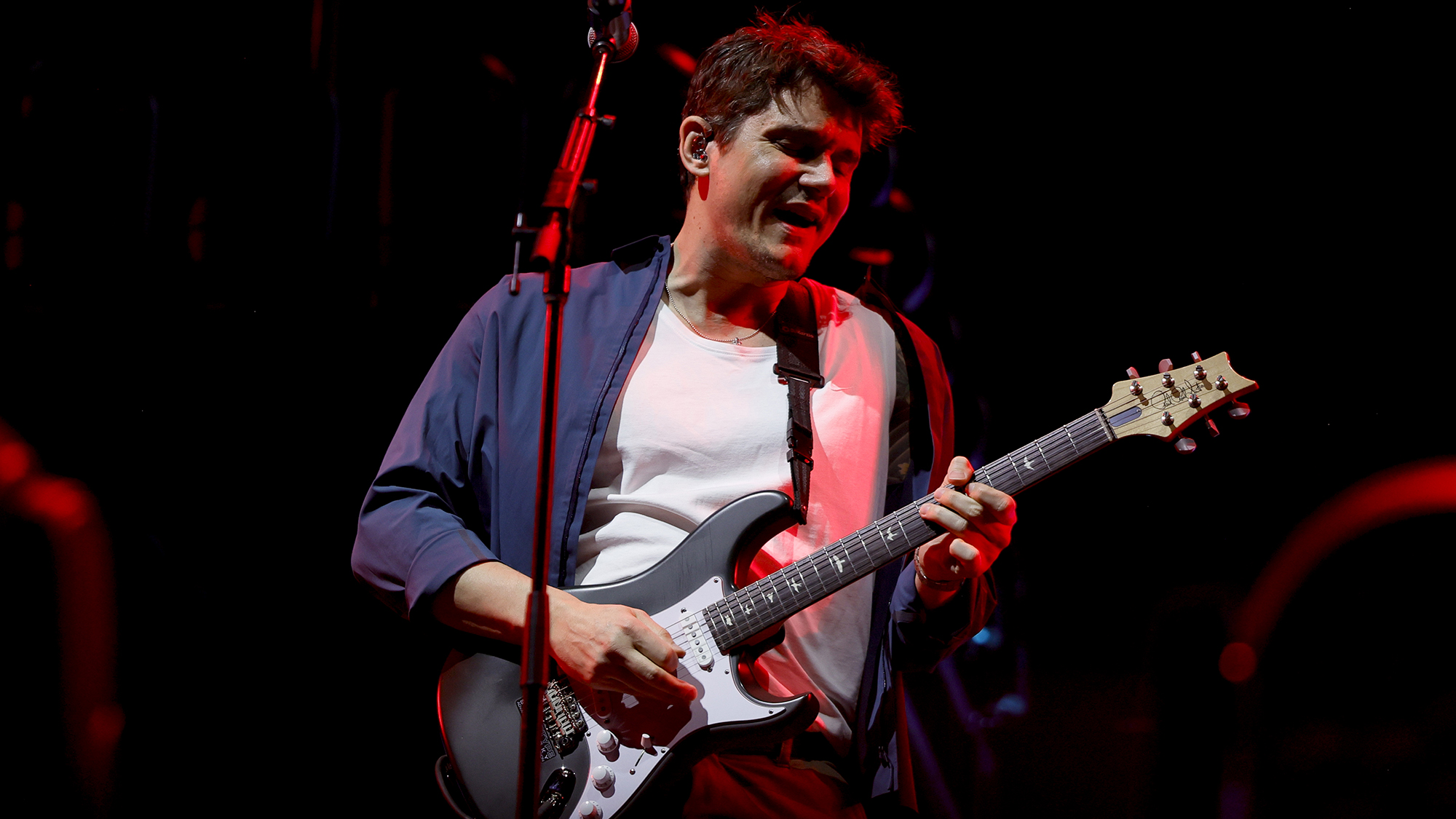Tool's Adam Jones talks everything Fear Inoculum: the agonizing wait, the colossal tones and those signature pull-offs
The prog-metal titan takes you behind the scenes of the long-awaited album
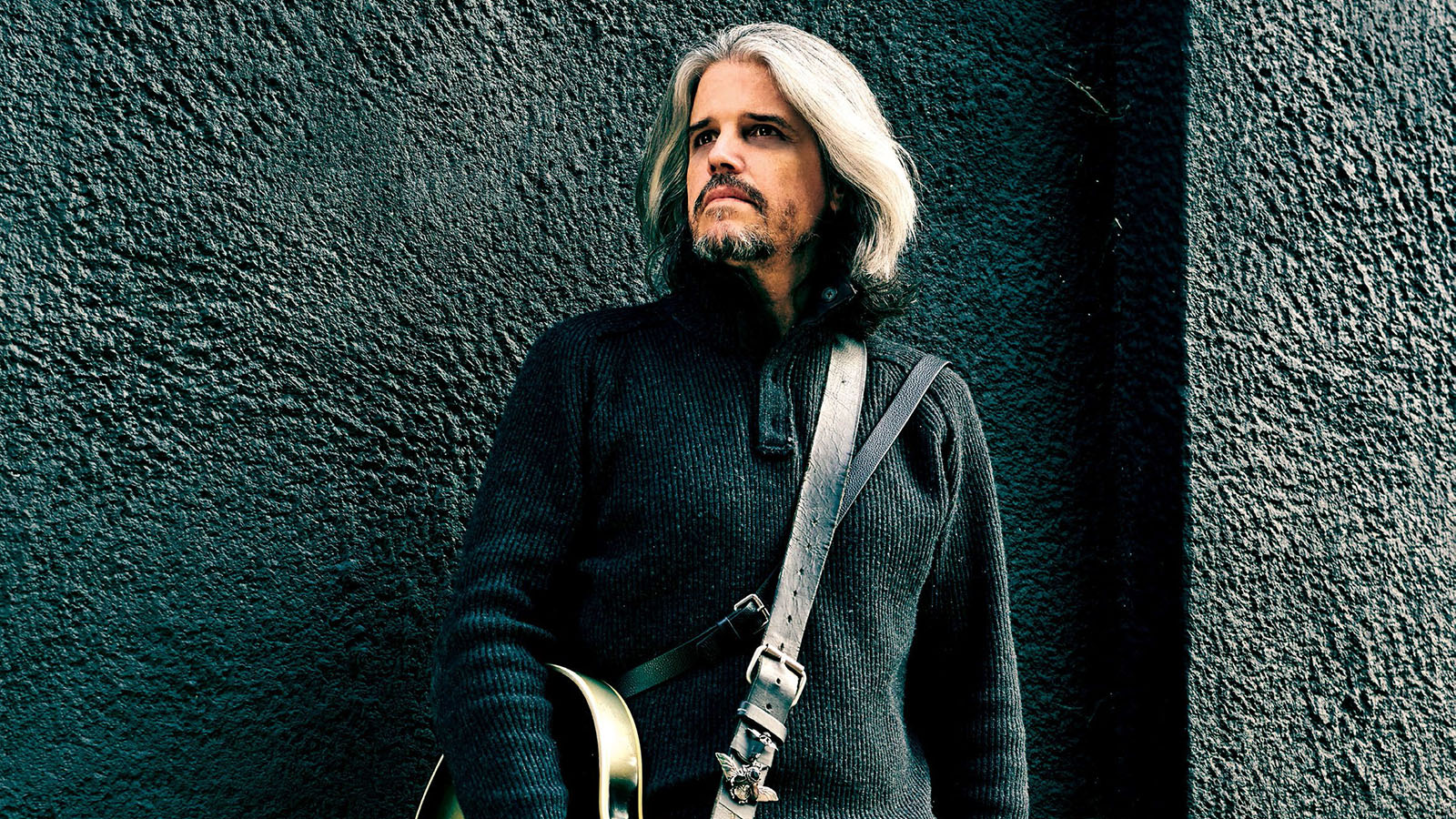
Best of 2019: It’s been nearly 5,000 days since the release of Tool’s last studio effort, 10,000 Days.
That’s 13 years since the genre-busting metal dissidents have put out any new music - the lion’s share of which have been characterized by vague progress reports, a ceaselessly active rumor mill, overly optimistic release dates and an ever-passionate but deeply frustrated fanbase that’s been kept busy with conspiracy theories and conjecture about whether or not they’d actually ever hear new Tool music again. However, on August 30, one of the most influential and mythicized bands of its generation finally added a new chapter to its discography.
As Tool cap off a triumphant run of European festival dates, guitarist and conceptual luminary Adam Jones ruminates on the creation of his band’s latest - Fear Inoculum - from the confines of a hotel room in Belgium. Fuelled by a cocktail of exhaustion, relief and pride, Jones sits back to muse on the experience.
It’s obviously hard for us to get to the end result sometimes, but it’s that thing where you do something difficult and sometimes you hate it, but when it’s done, you’re like, ‘Let’s do it again!’
“The writing process can be magical and rewarding, or it can be the worst thing in the world and you want to kill the other person,” he says.
“It really comes down to having the communication, discipline and respect to believe in the other person when you might not necessarily believe in what they’re bringing in. It’s obviously hard for us to get to the end result sometimes, but it’s that thing where you do something difficult and sometimes you hate it, but when it’s done, you’re like, ‘Let’s do it again!’”
So, what exactly has 13 years of toil and tension yielded? An exceptionally cohesive 80-minute prog-metal odyssey that unfurls over seven tracks, most of which are constructed of multiple movements.
It’s a dynamic, intensely wrought and often meditative album, and - as if often the case with Tool’s releases - Fear Inoculum serves as a vehicle for a mysterious larger concept that aptly orbits the number seven.
Get The Pick Newsletter
All the latest guitar news, interviews, lessons, reviews, deals and more, direct to your inbox!
All of the elements that delivered this band from '90s alt-metal standouts to the genre-bending revolutionaries they are today are represented in spades here: It’s high concept, the musicianship is otherworldly and its production (helmed by longtime confidant and collaborator 'Evil' Joe Barresi) is a work of art in itself.
The album also offers absolutely nothing in the way of a potential single or a traditional song structure as either has no place within this record’s concept, emblematic of a band that’s leaned in even harder on its legendary altruism and disregard for industry norms.
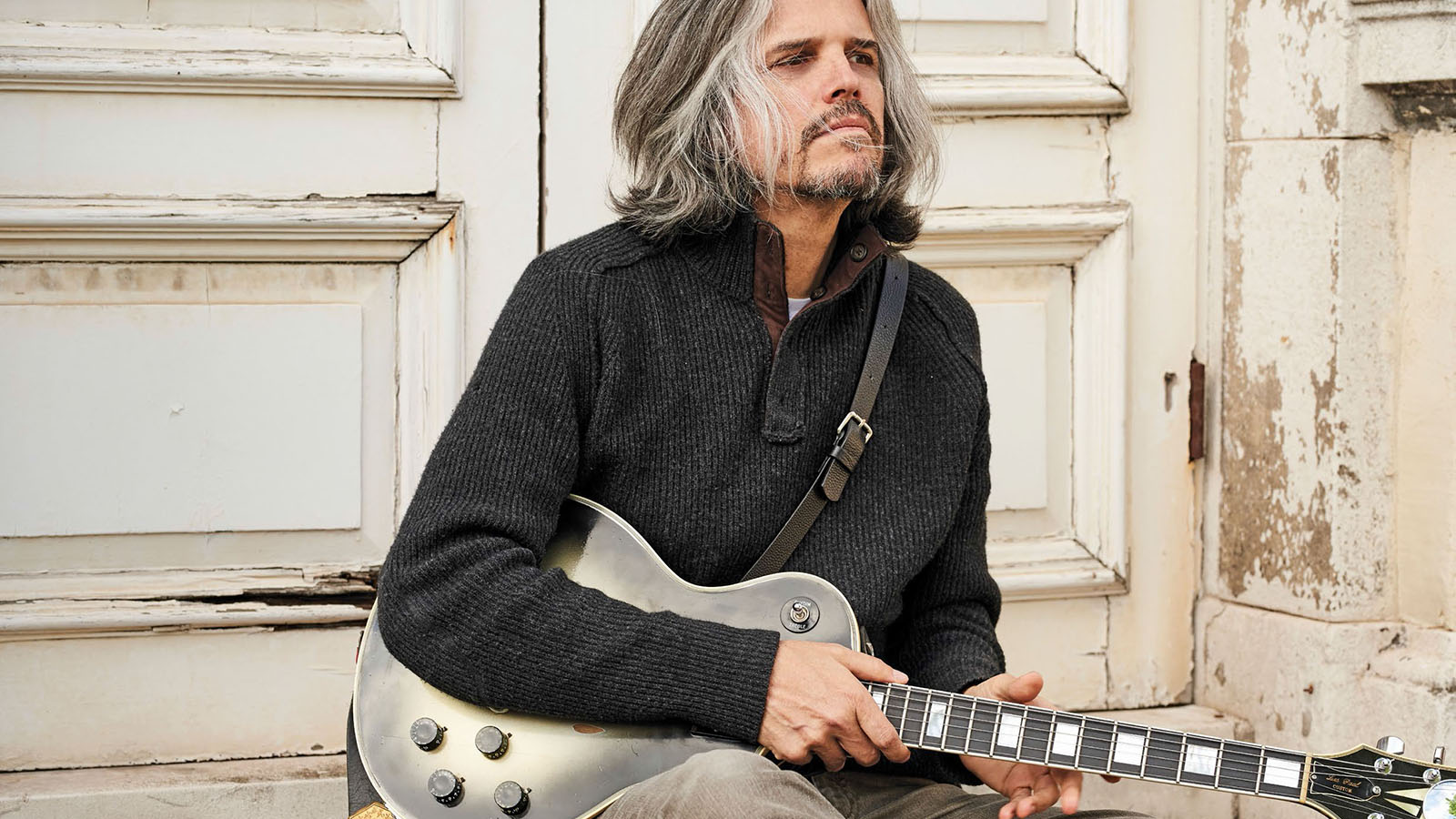
While Jones will be the first to point out that creating Tool’s art demands a complicated but balanced dance between all four of its members, his guitar work plays no small role in defining Fear Inoculum’s sound.
Jones’s playing here is absolutely bone-crushing at times, but also brilliantly economical, subtly technical and doused with plenty of clever and colorful effects - all of the guitarist’s calling cards. There’s even a four-minute solo section counted in 21 (or three rounds of seven)!
Perhaps more so than on any past Tool album, Fear Inoculum finds Jones working as both the band’s anchor in time and the glue that binds together drum wizard Danny Carey’s athletics with bass counterpart Justin Chancellor’s often elaborate statements.
Guitar World was granted an extremely rare early listen to the intensely protected new record as well as an audience with Jones, who talks about the mountains the band moved to create the new record, detailed its uncanny concept and everything, from his enduring love of Silverburst Les Paul Customs, to how his playing relationship with his bandmates has evolved over these 13 long years away from the recorded form.
Fear Inoculum sounds gigantic. It’s got a very meditative, cinematic vibe and sounds like a single, cohesive piece of music. Where were you guys coming from when it came to writing this one, especially after so much time away?
"It’s so weird because it’s been so many years and I dread the interviews because I wish I had something new to say after so long, but it was very much the same approach we’ve always had. We’re just older, we have different things influencing us and other distractions in our life that slow us down, but it’s basically the same thing it’s always been.
"The three of us meet, we start throwing riffs around and tearing them apart, we revisit things we wrote a long time ago that may work with the new stuff. It’s really about finding your roots again and remembering why you started in the first place, finding the fire that burned in you when you started, and not letting success distract you. We still really try to be true to our art form."
Tool records often have a larger concept at play lacing things together, like sacred geometry or references to numerology hidden in the music through time signatures or patterns. Is there something like that going on with the new album?
There’s a riff we count in 21 - which we count as three rounds of seven. I wrote a four-minute lead over something counted in 21, which is crazy!
"It was really weird. I took a picture pointing to the number seven while we were recording, and a lot of the riffs Justin [Chancellor, bass] and I brought in were in seven [either 7/4 or 7/8 meter]. You don’t really go, 'I’m going to write a riff in seven!' You just write a riff and you count it out and it turns out to be in seven.
"Without being too descriptive about the concept, the main thing is that the seven beat just kept coming up, and riffs in seven kept coming up. It was really weird! When we finished recording, I went to the guys and said, 'I think we should call the record Volume 7' because there a lot of the songs are in seven and there are seven tracks on the record.
"Then Maynard [James Keenan, Tool lead singer] told me about a whole concept he had about the number seven. We were all like, 'Oh my God! This is so weird!' Then, Alex Grey [Tool album artist] basically said the same thing, and he has a concept that will reveal itself through video.
"So there are a lot of rhythms and polyrhythms where we explore 7/4 or 7/3, and there’s a riff we count in 21 - which we count as three rounds of seven. I wrote a four-minute lead over something counted in 21, which is crazy!"
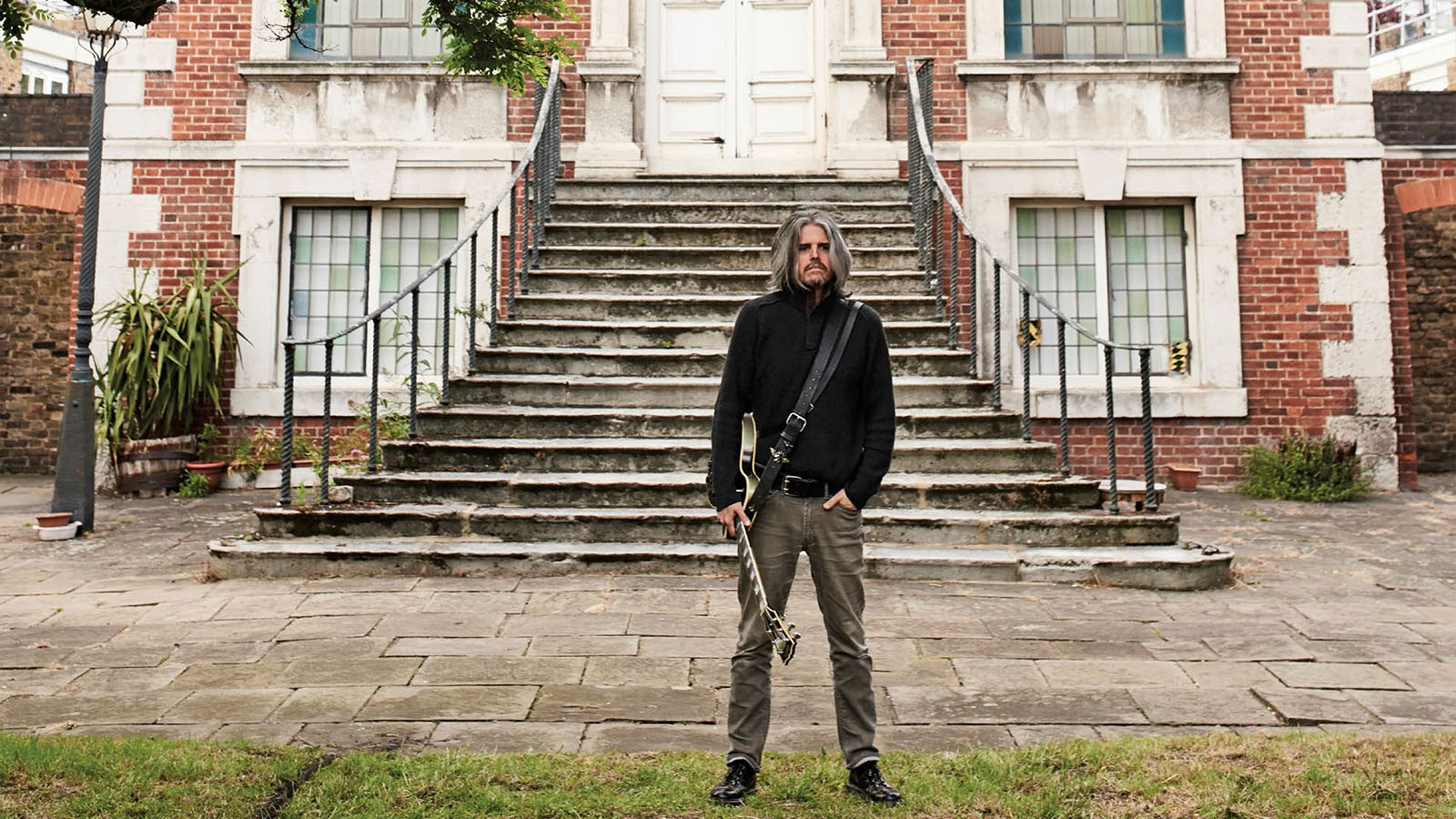
With so many years since Tool’s last release, how would you say you’ve evolved as a guitarist since 2006?
"That’s a good question! I’ve definitely been practicing more than ever. Since the last record came out, when I meet a guitarist I like, I’ll ask them what they do to warm-up or what do they do to stay good.
"Most of them show me a technique or a stretch - or maybe a practice idea. It’s always really interesting for me to see what they do, and I really try to practice the things these people give me.
The last time I saw Kirk Hammett, I asked and he sent me a video of this forwards/backwards run going up and down the neck of the guitar, and it really helped my playing a lot
"The last time I saw Kirk Hammett, I asked and he sent me a video of this forwards/backwards run going up and down the neck of the guitar, and it really helped my playing a lot. Instead of doing something like just trying to learn the lead in Master of Puppets, I asked what he does to keep himself good, but I think it’s better to learn how someone practices and apply it to your own ideas. I highly recommend it."
You’ve always been a player that takes influence from places outside of the guitar world - art, film, science. Was there anything like that that had an impact on your writing on this record?
"It’s honestly all such a blur. Honestly, it’s all coming in and I try to be like a sponge and vulnerable, and I try to ask a lot of questions and learn. I also try to look at the world - the keyword being 'try' - in a more forgiving way.
"When I watch a movie, I pretend I’m 12 because when I was 12 I liked everything. So many people are so jaded about everything and I try to avoid that. I just try to do that with the arts and music in general, and when I hear something, I ask myself what the influences came in when someone was creating it and I acknowledge that a player might not be Eddie Van Halen, but they’re good and they’re good in their own unique way, and I try to pick up on that and try to think from my chest instead of from my head."
It’s funny to hear that a forgiving gaze is the key for you, considering how legendary Tool’s perfectionism is.
"I don’t know if I was the first person to say it, but I always thought it as a kid and I still think: it’s not good when it’s done, it’s done when it’s good. That’s how we go about what we do."
There’s a lot of really interesting texture and atmospheric playing on the new album that’s very anti-rock guitar at times. Could you expand on your approach to that side of things?
"Danny [Carey, drums] and I both took band in school, and while Justin knows music theory, Danny and I really understand the way everyone’s parts work and what’s needed as a whole. You’re dedicated, but not necessarily attached to ideas.
"It’s a system and it’s a group effort, so you get used to asking, 'What does it need?' and not trying to play leads the whole time or worrying why your guitar isn’t loud enough. It’s about focusing on the four parts making a whole.
"It takes a lot of discipline to think about what the song needs at a given time and really dial it in, and there are times when my part on its own might sound stupid or childish, but it can be what the song needs to drive everything else, and I think all of us have that understanding."
Your playing relationship with Justin is very symbiotic, and you guys often complete each other’s musical ideas on the new album. How has that playing relationship evolved since the last album?
Justin and I really work like we’re the same instrument - like I’m the right hand and he’s the left hand on a piano
"Dan and Justin work very much 'complex-to-simple', and when we start jamming, they play the craziest stuff they’ve got and then whittle it down to the thing that gets fine tuned that’ll work for a song.
"I do the opposite. I like finding the simplest thing that works and I look for a catchy riff. I’m not worried about what kind of tone I have or the pedals I’m using - all that stuff comes later. But you have to have faith in the other people involved and let them work the way they’re used to working. So, it hasn’t really changed, but we’ve explored different ideas together.
"One of the songs on the record has these volume swells, and we had the idea for a call-and-answer between Justin and me - where I’ll swell up and then Justin will swell up with the same note, but I’m on the beat and he’s on the offbeat. That kind of experimentation is really cool and we really work like we’re the same instrument - like I’m the right hand and he’s the left hand on a piano."

That swelling, synthy guitar on Invincible is really interesting. Do you recall what gear you used for the sound during that passage?
"The first part of that song is a good example of what we did with riffs in seven. We experimented a lot with sounds and different guitars, and it’s pretty amazing how when I use my guitars live, it’s that sound, but when you’re pushing it through a tiny speaker, you really want to get the right tone. As that song builds, I think the guitars change maybe three times.
"It’s really tough to recall specifics because of how much stuff was used in the process. Joe Barresi [producer] has an amazing guitar collection - I brought a lot of guitars, and my friends like Buzz Osborne from the Melvins and others brought even more stuff. We tried tons of stuff!
"We worked hard to find the things that really worked because we wanted to make a quality record that lasts, that we’re happy with 20 years from now and can step back and say it still holds up. The process was great and really satisfying and I’m really happy we took the time to do it the way we did."
The sounds on the record are very much your signature tonal palette - but expanded and exaggerated in a lot of places. Did you start with your stage amps for the core sounds?
"I used my regular setup with my Marshall Superbass and my Diezel VH4s. The transformer in that Marshall is hand-wound in an old-school way that they don’t really do any more, and the wire used is an old-school type of wire and it has a unique thing to it.
"Joe also brought out so many cool things! I was really blown away by the Rivera stuff; those amps sound amazing and the guys at Rivera are so helpful. I’m kind of scratching my head about moving over to Rivera because I was so impressed with their stuff."
How many old Silverburst Les Paul Customs do you own at this point? I see you post newly acquired ones on Instagram and I can’t imagine there are many left in the wild.
I have a true love for Silverburst and that guitar in general, and I believe that particular metallic paint does something to the tone or the resonance or the polarity somehow
"That’s funny! I remember buying my first one and the guitar salesman really tried to talk me out of it. It was the early '90s on the Sunset Strip and it was like Guitars R Us or one of those shops where all the guys running it were very pretty, had hair-sprayed hair and jeans tucked into their cowboy boots.
"I have a true love for that color and that guitar in general, and I believe that particular metallic paint does something to the tone or the resonance or the polarity somehow.
"Right now I have six actual vintage Silverburst Gibson Les Paul Customs and I have some others that people have given me that have been painted silverburst. I bought a couple extra because I used to only bring two guitars on the road, but now we use drop B for Prison Sex and then we tune the guitar down to drop C for The Pot, which is a little easier for Maynard to sing and he can really let go every time."
Do you modify any of those guitars at all these days?
"I use the thickest frets possible because I pull off a lot and I also like to use kind of a sitar technique where if you push down really hard, the note will go sharp, and the big frets make that work.
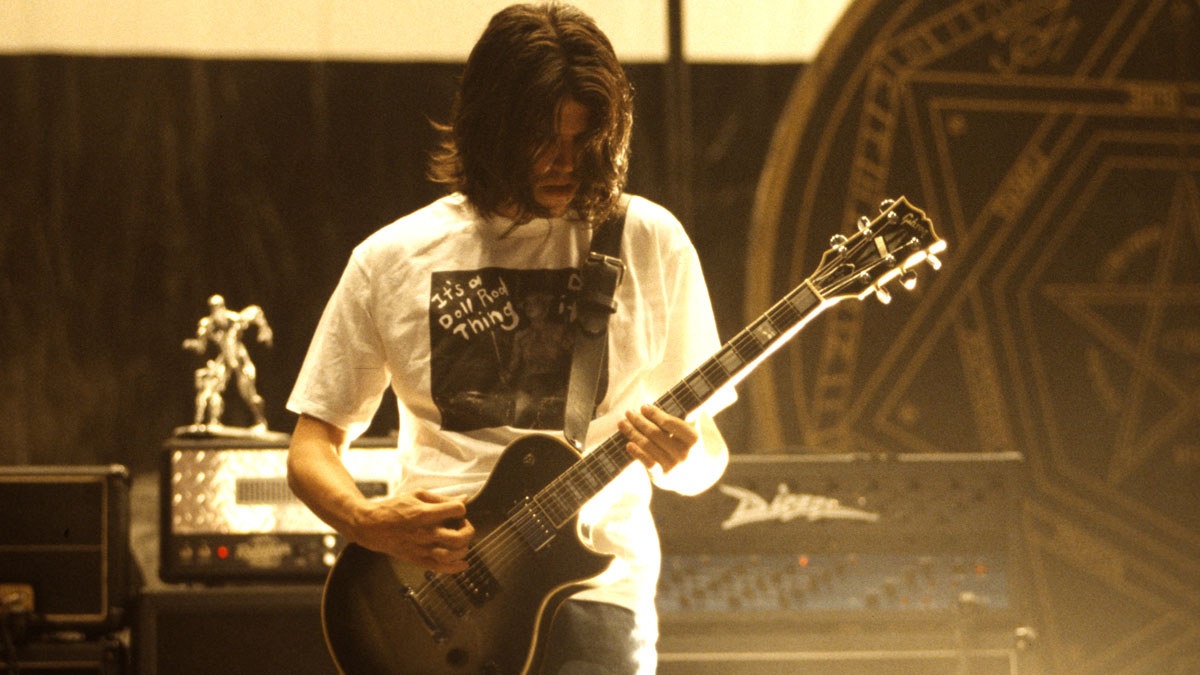
"I still use just the original Seymour Duncan Super Distortion pickups. I buy those up whenever I see an old one from the '90s. Every guitar sounds different and every pickup sounds different; Joe has this guitar that someone basically gave him, just a cheap Japanese Les Paul knockoff that’s had wallpaper applied to it, and it’s amazing for clean sounds! It’s honestly an amazing, really cool-sounding guitar. So you never know!"
There are many unique combinations of effects here. Did you find any new effects particularly inspiring for these songs? Did any have riffs hiding in them?
"Patrick Emmons from Abominable Electronics sent me a care package and Joe and I put all of his stuff through its paces.
"We also got these pedals by a company called Ogre from Korea that are shaped like robot faces, which I saw Richie Faulkner from Judas Priest using. We bought their whole line and that delay [Kronomaster] is really, really cool! Also Richie Faulkner is awesome; I could watch him play all day. He really deserves that gig - and he’s an animal."
You have a left-handed strum/pull-off technique on track Jambi that has mystified a lot of Tool fans over the years. How did you develop that idea?
"The pull-off thing I do? That started because I play in drop D and if you do a chord in drop D, you hold down the top three strings with your first finger and then your third and fourth finger hold the fourth and fifth string, creating a cheater’s barre D-shape chord that you can move up and down the neck.
"In the old days, I’d just play the first strings with one finger, and I’d do this thing where I’d dramatically pull off to get to the next chord - and I started noticing a rhythm in that dramatic pull-off.
I’m not Eddie Van Halen, but I try to figure out other things I can do that are mine. I love Eddie and I wish I could play like him, but it’s kind of been done and that’s also kind of the point!
"I often try to emulate what Danny does because he’s the best drummer in the world. With all the weird shit he does, I have to figure out if there are things I can do between my left and right hand that are percussive and accent his thing. So I started playing with that idea and noticed I could pull all of the strings with one finger on my left hand and pick at the same time.
"I did that early on with Tool and you hear it in a lot of our tunes. I see kids do that song on YouTube and they’re usually playing it wrong.
"I use that technique in the middle of Invincible on the new record on a part in seven, and I’m pulling off that whole sequence. I honestly use the shit out of that thing.
"Again, I’m not Eddie Van Halen, but I try to figure out other things I can do that are mine. I love Eddie and I wish I could play like him, but it’s kind of been done and that’s also kind of the point!
"For a guitar player - regardless of what your level is - it’s about doing what you can do and trying to do it well instead of worrying about how someone else does it. I think people get kind of lost when it comes to why they’re doing it.
"It’s not a video game where you have to master a sequence exactly or you don’t beat the level. That’s not what guitar playing is, and if you’re trying to emulate someone else, sure, it can help you with what you’re doing, but if you get lost in that pursuit, you’re not going to do anything worthwhile.
"I play the best I can - and I try to play with emotion and from my heart - and get myself excited while doing the best job I can do."




